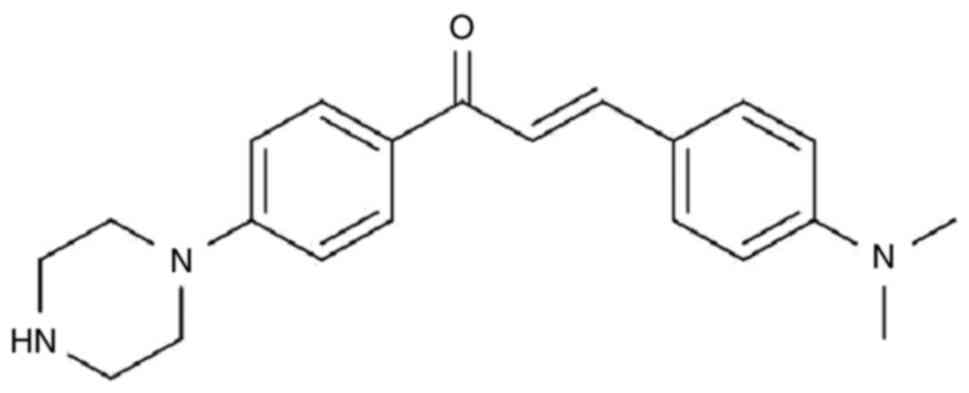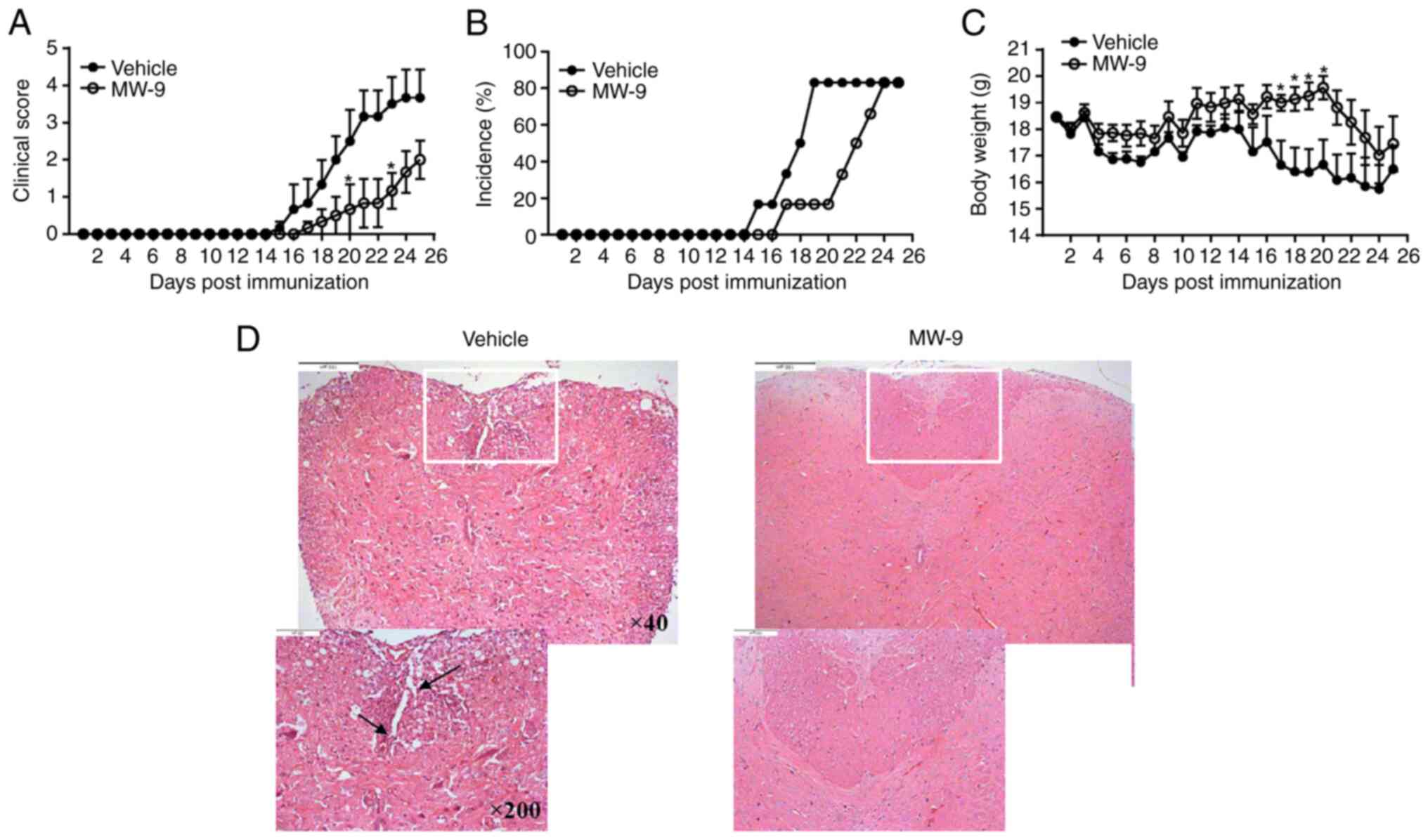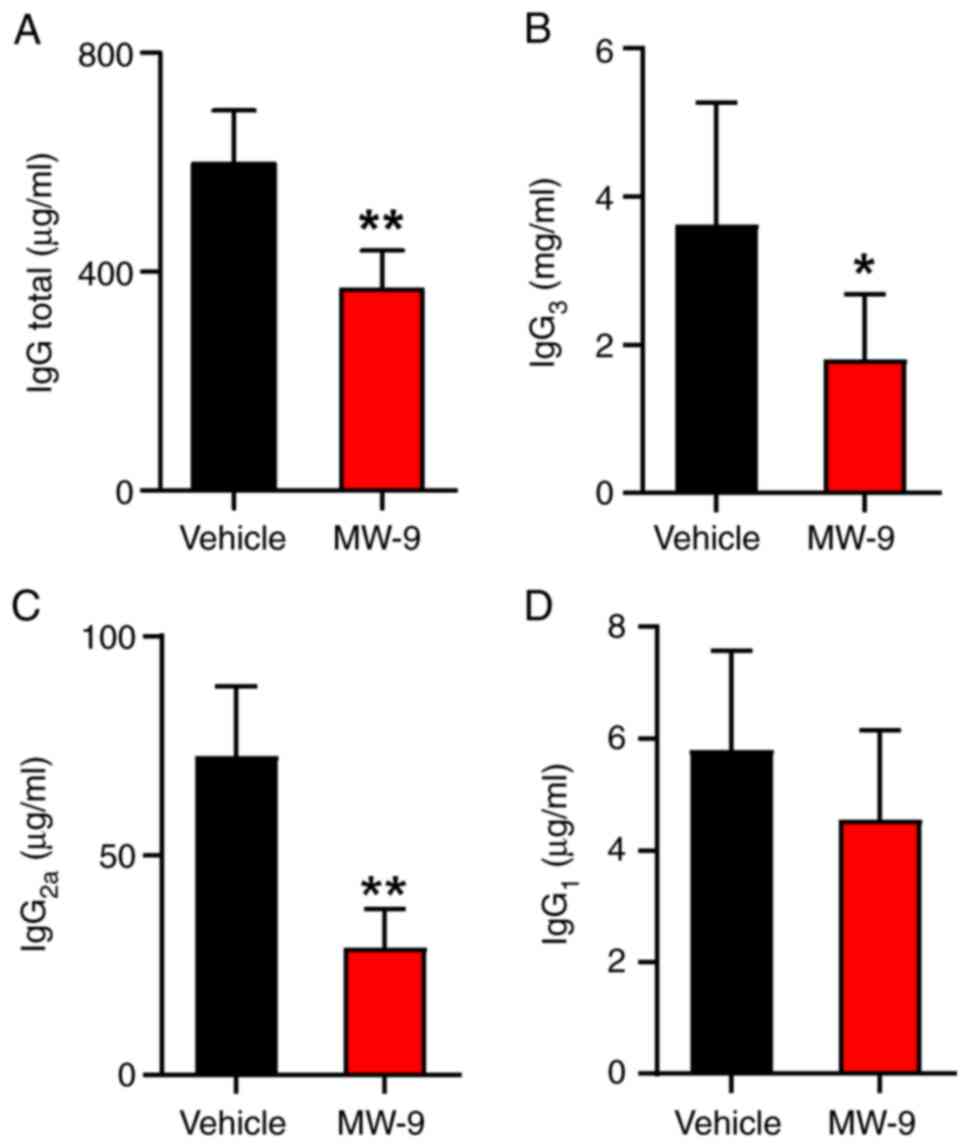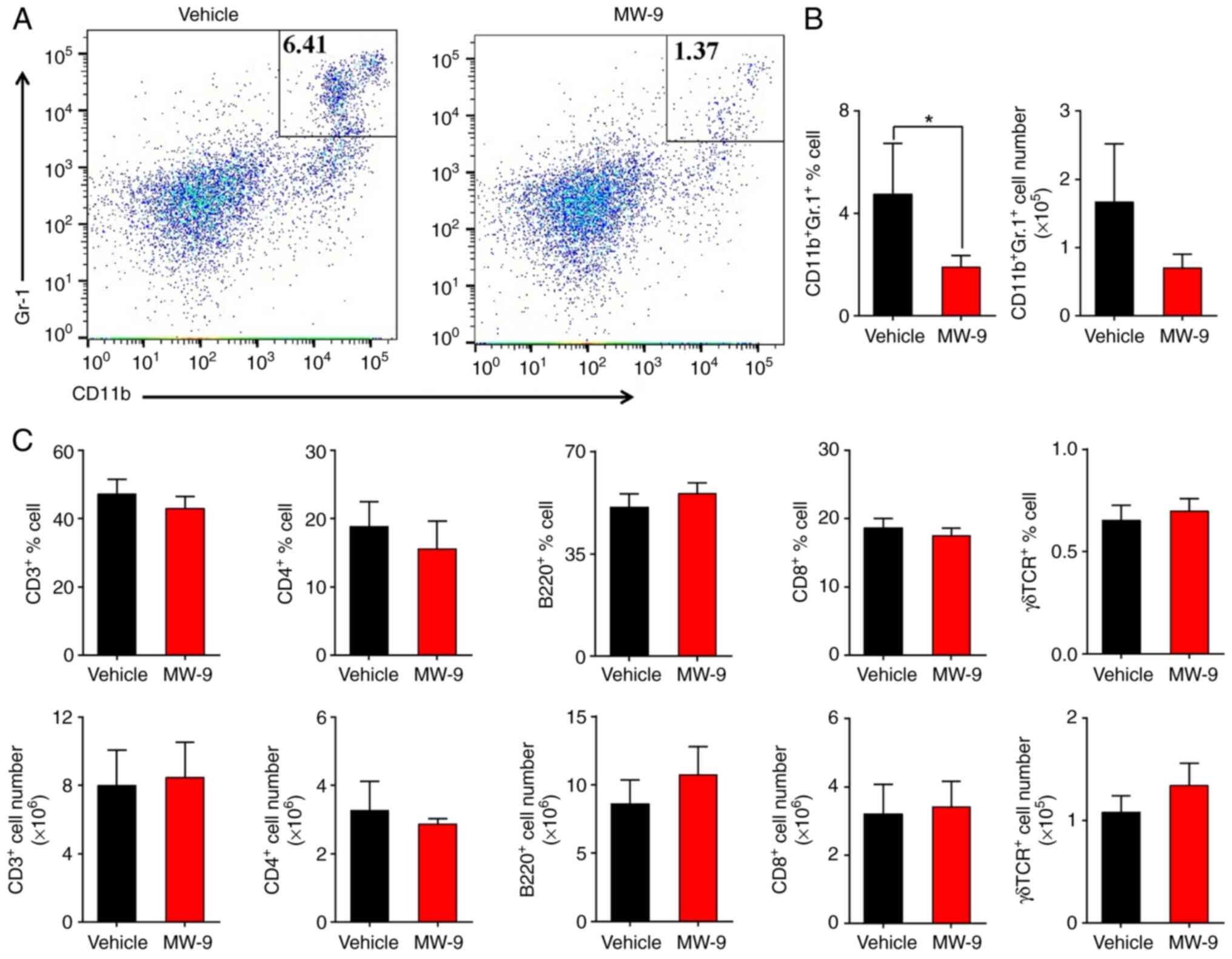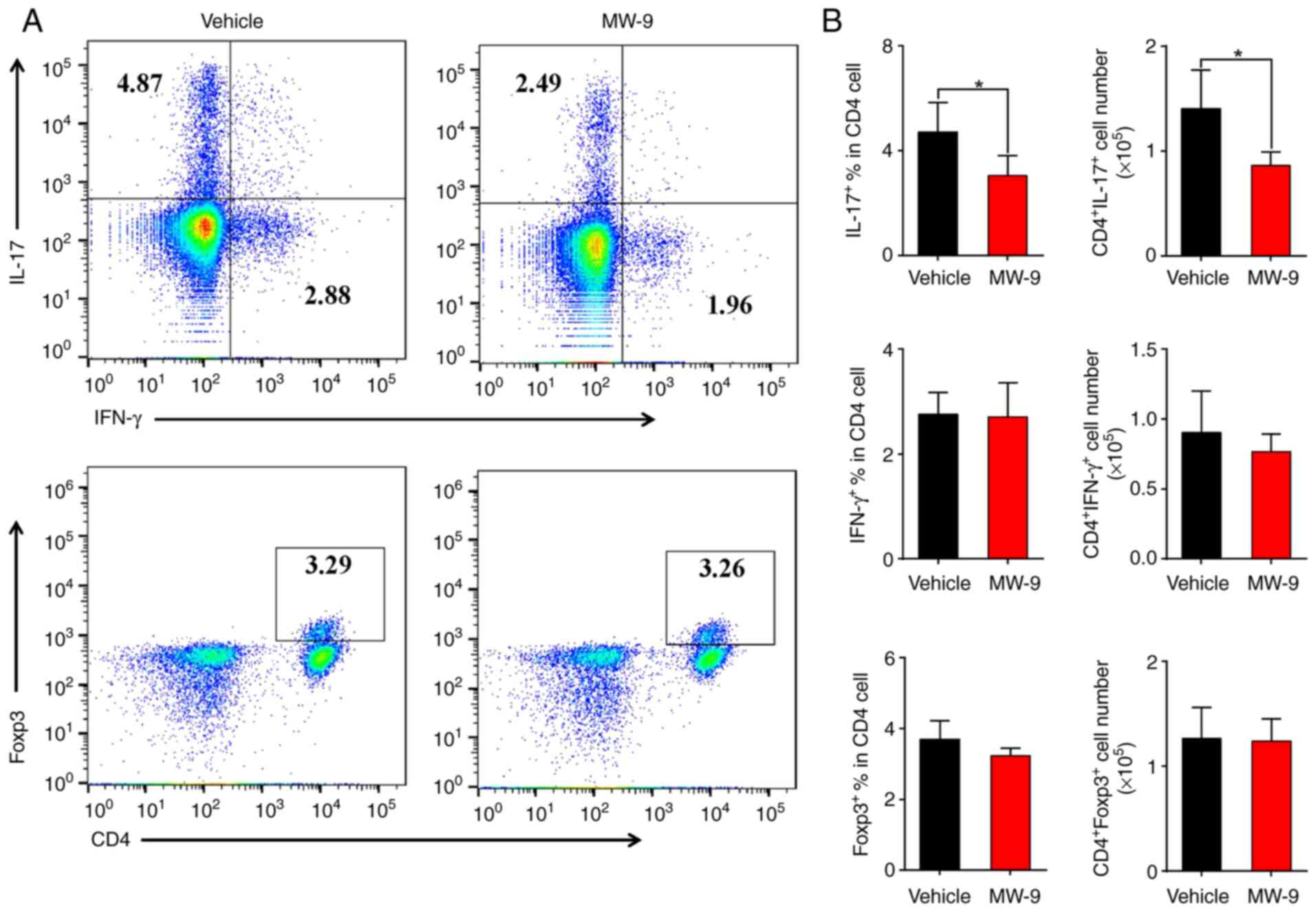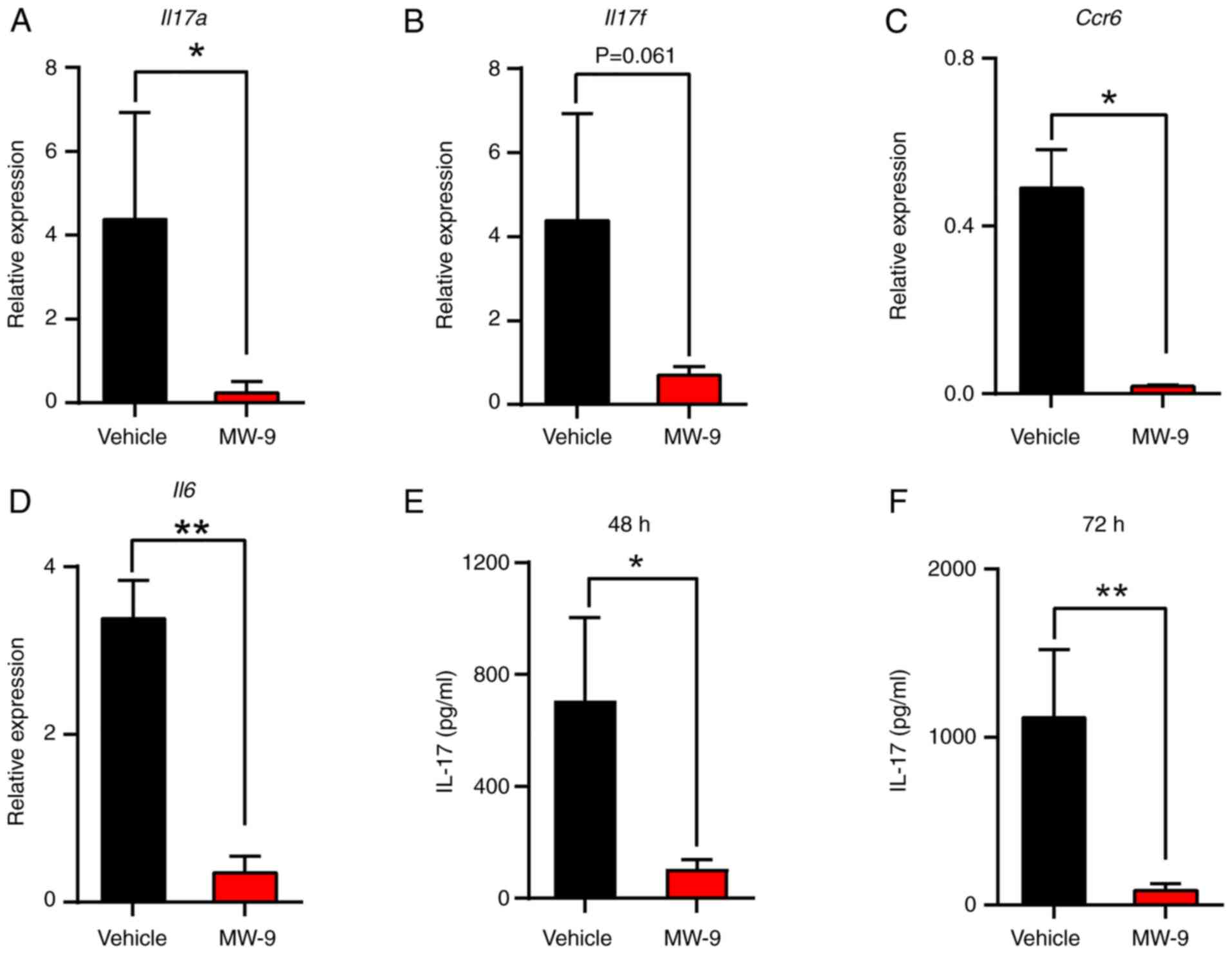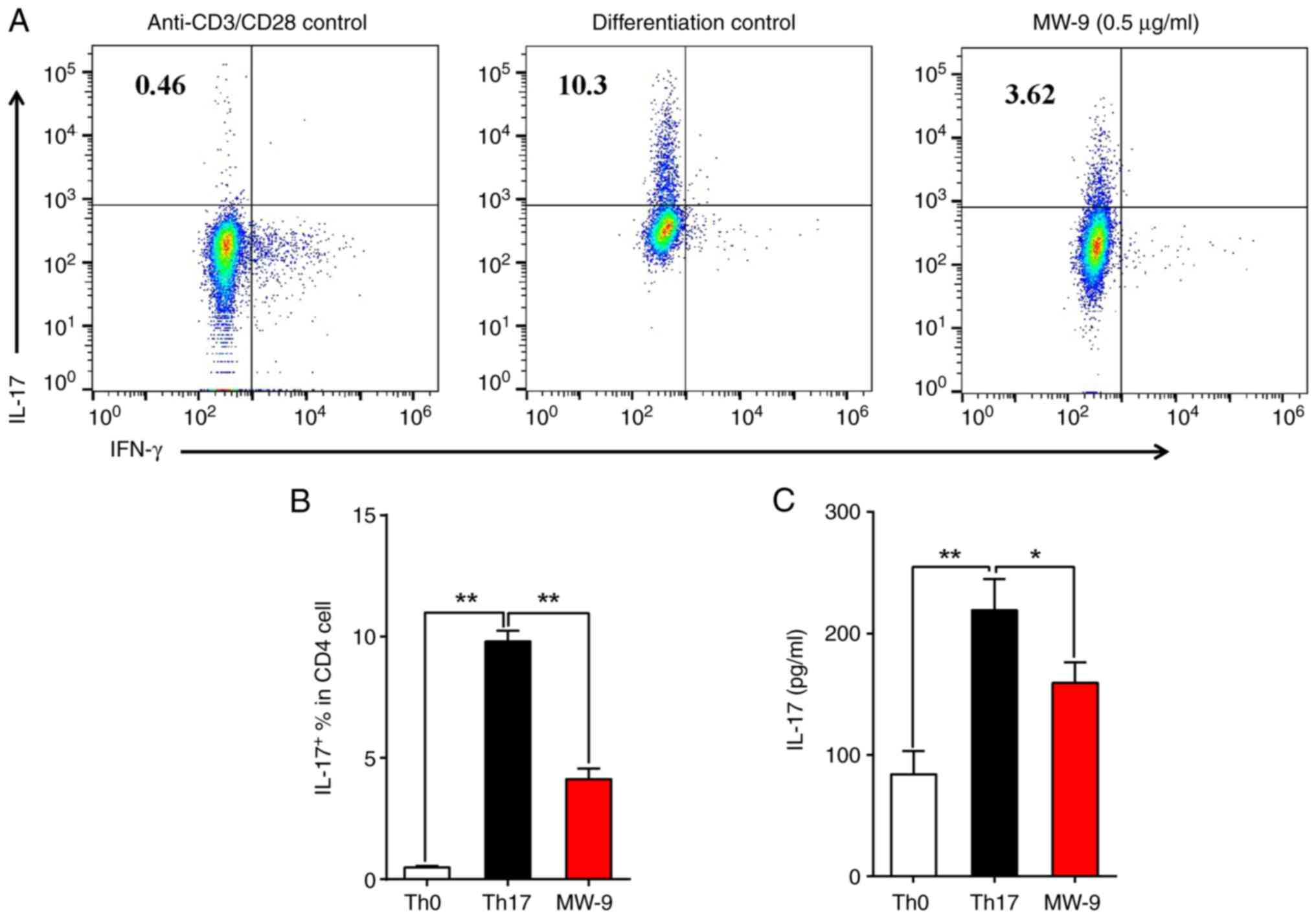|
1
|
Liu Q, Gao Q, Zhang Y, Li Z and Mei X:
MicroRNA-590 promotes pathogenic Th17 cell differentiation through
targeting Tob1 and is associated with multiple sclerosis. Biochem
Biophys Res Commun. 493:901–908. 2017. View Article : Google Scholar : PubMed/NCBI
|
|
2
|
Handel AE, Lincoln MR and Ramagopalan SV:
Of mice and men: Experimental autoimmune encephalitis and multiple
sclerosis. Eur J Clin Invest. 41:1254–1258. 2011. View Article : Google Scholar : PubMed/NCBI
|
|
3
|
Gran B, Zhang GX, Yu S, Li J, Chen XH,
Ventura ES, Kamoun M and Rostami A: IL-12p35-deficient mice are
susceptible to experimental autoimmune encephalomyelitis: Evidence
for redundancy in the IL-12 system in the induction of central
nervous system autoimmune demyelination. J Immunol. 169:7104–7110.
2002. View Article : Google Scholar : PubMed/NCBI
|
|
4
|
El-behi M, Rostami A and Ciric B: Current
views on the roles of Th1 and Th17 cells in experimental autoimmune
encephalomyelitis. J Neuroimmune Pharmacol. 5:189–197. 2010.
View Article : Google Scholar : PubMed/NCBI
|
|
5
|
Cua DJ, Sherlock J, Chen Y, Murphy CA,
Joyce B, Seymour B, Lucian L, To W, Kwan S, Churakova T, et al:
Interleukin-23 rather than interleukin-12 is the critical cytokine
for autoimmune inflammation of the brain. Nature. 421:744–748.
2003. View Article : Google Scholar : PubMed/NCBI
|
|
6
|
Langrish CL, McKenzie BS, Wilson NJ, de
Waal Malefyt R, Kastelein RA and Cua DJ: IL-12 and IL-23: Master
regulators of innate and adaptive immunity. Immunol Rev.
202:96–105. 2004. View Article : Google Scholar : PubMed/NCBI
|
|
7
|
Komiyama Y, Nakae S, Matsuki T, Nambu A,
Ishigame H, Kakuta S, Sudo K and Iwakura Y: IL-17 plays an
important role in the development of experimental autoimmune
encephalomyelitis. J Immunol. 177:566–573. 2006. View Article : Google Scholar : PubMed/NCBI
|
|
8
|
Lin Y, Hu C, Zheng X, Wang X and Mao Z:
Synthesis and anti-tumor activities of novel
4′-(N-substitued-1-piperazinyl) chalcone derivatives. Chin J Org
Chem. 37:237–241. 2017. View Article : Google Scholar
|
|
9
|
Hui G, Xi Z, Ping Z, Si W, Chunping W,
Gaoxionga R and Zewei M: Synthesis and biological evaluation of
novel substituted chalcone-piperazine derivatives. Chin J Org Chem.
38:684–691. 2018. View Article : Google Scholar
|
|
10
|
Mao Z, Zheng X, Lin Y, Qi Y, Hu C, Wan C
and Rao G: Concise synthesis and biological evaluation of chalcone
derivatives bearing N-heterocyclic moieties. Heterocycles.
92:1102–1110. 2016. View Article : Google Scholar
|
|
11
|
Li X, Li TT, Zhang XH, Hou LF, Yang XQ,
Zhu FH, Tang W and Zuo JP: Artemisinin analogue SM934 ameliorates
murine experimental autoimmune encephalomyelitis through enhancing
the expansion and functions of regulatory T cell. PLoS One.
8:e741082013. View Article : Google Scholar : PubMed/NCBI
|
|
12
|
Contarini G, Giusti P and Skaper SD:
Active induction of experimental autoimmune encephalomyelitis in
C57BL/6 mice. Neurotrophic Factors. Springer; pp. 353–360. 2018,
View Article : Google Scholar
|
|
13
|
Hou L, Rao DA, Yuki K, Cooley J, Henderson
LA, Jonsson AH, Kaiserman D, Gorman MP, Nigrovic PA, Bird PI, et
al: SerpinB1 controls encephalitogenic T helper cells in
neuroinflammation. Proc Natl Acad Sci USA. 116:20635–20643. 2019.
View Article : Google Scholar : PubMed/NCBI
|
|
14
|
Rho TW, Lee SY, Han SY, Kim JH, Lee KH,
Kim DS, Kwak HB and Kim YK: Glycyrrhizae radix inhibits osteoclast
differentiation by inhibiting c-Fos-dependent NFATc1 expression. Am
J Chin Med. 45:283–298. 2017. View Article : Google Scholar : PubMed/NCBI
|
|
15
|
Xu S, Zuo A, Guo Z and Wan C: Ethyl
caffeate ameliorates collagen-induced arthritis by suppressing TH1
immune response. J Immunol Res. 2017. 74167922017.PubMed/NCBI
|
|
16
|
Livak KJ and Schmittgen TD: Analysis of
relative gene expression data using real-time quantitative PCR and
the 2(−Delta Delta C(T)) method. Methods. 25:402–408. 2001.
View Article : Google Scholar : PubMed/NCBI
|
|
17
|
Cao YJ, Xu Y, Liu B, Zheng X, Wu J, Zhang
Y, Li XS, Qi Y, Sun YM, Wen WB, et al: Dioscin, a steroidal saponin
isolated from dioscorea nipponica, attenuates collagen-induced
arthritis by inhibiting Th17 cell response. Am J Chin Med.
47:423–437. 2019. View Article : Google Scholar : PubMed/NCBI
|
|
18
|
Hou LF, He SJ, Li X, Yang Y, He PL, Zhou
Y, Zhu FH, Yang YF, Li Y, Tang W and Zuo JP: Oral administration of
artemisinin analog SM934 ameliorates lupus syndromes in MRL/lpr
mice by inhibiting Th1 and Th17 cell responses. Arthritis Rheum.
63:2445–2455. 2011. View Article : Google Scholar : PubMed/NCBI
|
|
19
|
Hou L, Cooley J, Swanson R, Ong PC, Pike
RN, Bogyo M, Olson ST and Remold-O'Donnell E: The protease
cathepsin L regulates Th17 cell differentiation. J Autoimmun.
65:56–63. 2015. View Article : Google Scholar : PubMed/NCBI
|
|
20
|
Langrish CL, Chen Y, Blumenschein WM,
Mattson J, Basham B, Sedgwick JD, McClanahan T, Kastelein RA and
Cua DJ: IL-23 drives a pathogenic T cell population that induces
autoimmune inflammation. J Exp Med. 201:233–240. 2005. View Article : Google Scholar : PubMed/NCBI
|
|
21
|
Chung Y, Yang X, Chang SH, Ma L, Tian Q
and Dong C: Expression and regulation of IL-22 in the
IL-17-producing CD4+ T lymphocytes. Cell Res. 16:902–907. 2006.
View Article : Google Scholar : PubMed/NCBI
|
|
22
|
Brzustewicz E and Bryl E: The role of
cytokines in the pathogenesis of rheumatoid arthritis-practical and
potential application of cytokines as biomarkers and targets of
personalized therapy. Cytokine. 76:527–536. 2015. View Article : Google Scholar : PubMed/NCBI
|
|
23
|
Weaver CT, Harrington LE, Mangan PR,
Gavrieli M and Murphy KM: Th17: An effector CD4 T cell lineage with
regulatory T cell ties. Immunity. 24:677–688. 2006. View Article : Google Scholar : PubMed/NCBI
|
|
24
|
Bettelli E, Oukka M and Kuchroo VK:
T(H)-17 cells in the circle of immunity and autoimmunity. Nat
Immunol. 8:345–350. 2007. View Article : Google Scholar : PubMed/NCBI
|
|
25
|
Louten J, Boniface K and de Waal Malefyt
R: Development and function of TH17 cells in health and disease. J
Allergy Clin Immunol. 123:1004–1011. 2009. View Article : Google Scholar : PubMed/NCBI
|
|
26
|
Zhou L, Ivanov II, Spolski R, Min R,
Shenderov K, Egawa T, Levy DE, Leonard WJ and Littman DR: IL-6
programs T(H)-17 cell differentiation by promoting sequential
engagement of the IL-21 and IL-23 pathways. Nat Immunol. 8:967–974.
2007. View
Article : Google Scholar : PubMed/NCBI
|
|
27
|
Zheng Y, Danilenko DM, Valdez P, Kasman I,
Eastham-Anderson J, Wu J and Ouyang W: Interleukin-22, a T(H)17
cytokine, mediates IL-23-induced dermal inflammation and
acanthosis. Nature. 445:648–651. 2007. View Article : Google Scholar : PubMed/NCBI
|
|
28
|
Yang XO, Panopoulos AD, Nurieva R, Chang
SH, Wang D, Watowich SS and Dong C: STAT3 regulates
cytokine-mediated generation of inflammatory helper T cells. J Biol
Chem. 282:9358–9363. 2007. View Article : Google Scholar : PubMed/NCBI
|
|
29
|
Ivanov II, McKenzie BS, Zhou L, Tadokoro
CE, Lepelley A, Lafaille JJ, Cua DJ and Littman DR: The orphan
nuclear receptor RORgammat directs the differentiation program of
proinflammatory IL-17+ T helper cells. Cell. 126:1121–1133. 2006.
View Article : Google Scholar : PubMed/NCBI
|















